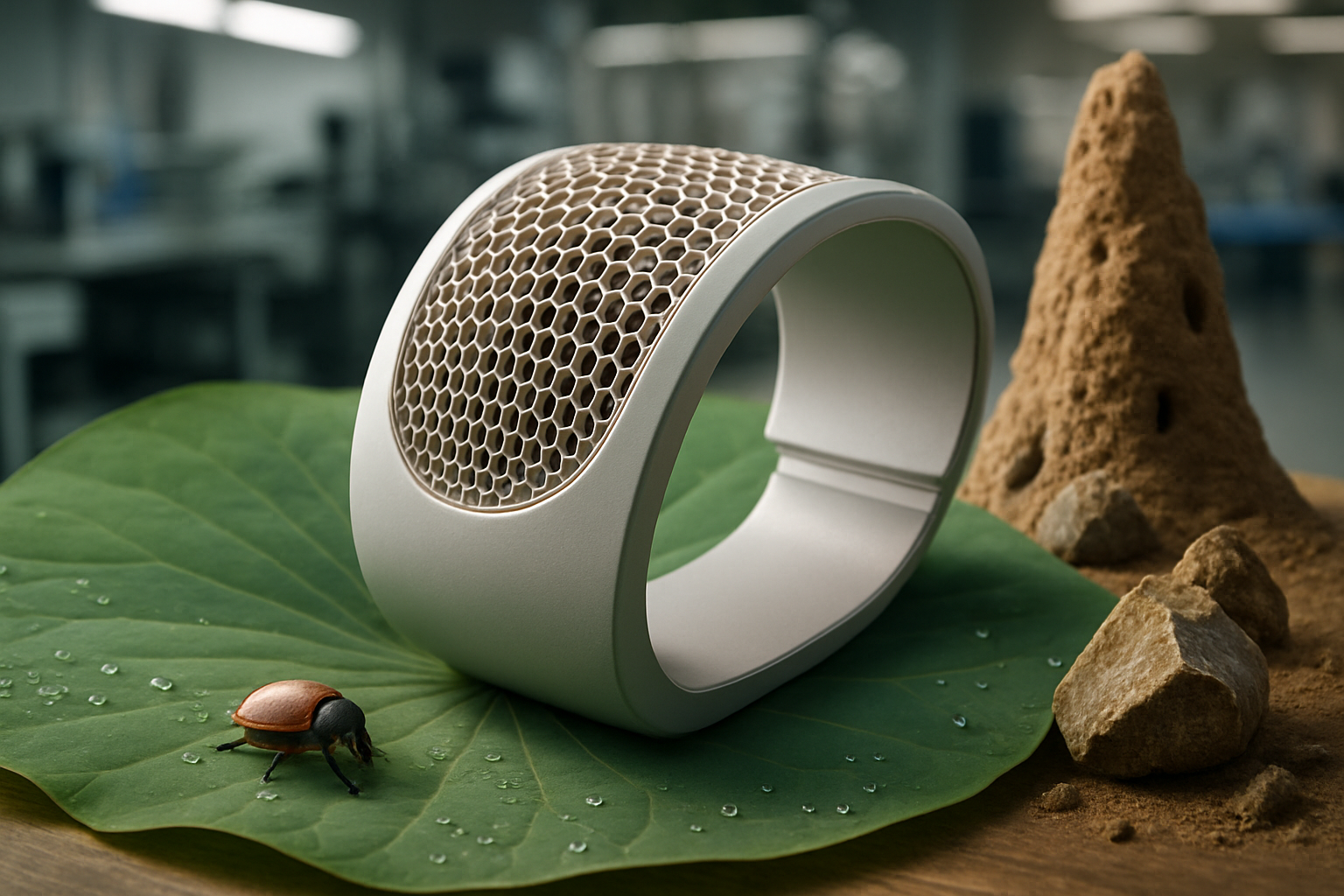Biomimicry in Industrial Design: Nature-Inspired Solutions for Operational Excellence
Revolutionizing industrial practices through the lens of nature's time-tested strategies, biomimicry offers a fresh approach to enhancing operational efficiency and product design. This innovative methodology draws inspiration from biological systems to solve complex industrial challenges, paving the way for sustainable and high-performing solutions.

The Foundations of Biomimicry in Industry
Biomimicry as a concept has existed for centuries, with early examples including Leonardo da Vinci’s flying machine designs inspired by bird wings. However, its formal application in industrial design gained traction in the late 20th century. Janine Benyus, a biologist and innovation consultant, popularized the term “biomimicry” in her 1997 book, sparking a renewed interest in nature-inspired solutions across various industries.
The core principle of biomimicry involves identifying a design challenge, studying how nature has solved similar problems, and then adapting those solutions to human needs. This approach differs from bio-utilization or bio-assisted technologies, as it focuses on learning from nature’s processes and systems rather than simply using biological materials or organisms.
Nature’s Blueprints for Industrial Innovation
Industries across the spectrum are discovering the potential of biomimicry to drive innovation and improve operational efficiency. From aerospace to manufacturing, nature’s designs are influencing how products are conceived, produced, and utilized.
One prominent example is the development of self-cleaning surfaces inspired by the lotus leaf. The leaf’s microscopic structure repels water and dirt, a property that has been replicated in paints, fabrics, and building materials. This innovation has significant implications for industrial maintenance, reducing the need for chemical cleaners and labor-intensive cleaning processes.
Optimizing Energy Efficiency through Natural Systems
Energy efficiency remains a critical concern in industrial operations, and biomimicry offers novel approaches to address this challenge. The structure of termite mounds, which maintain a constant internal temperature despite extreme external fluctuations, has inspired more efficient building designs. By mimicking the mounds’ passive ventilation systems, architects and engineers have created buildings that require significantly less energy for climate control.
Similarly, the aerodynamic properties of the kingfisher’s beak have influenced the design of high-speed trains, reducing energy consumption and noise pollution. These nature-inspired solutions not only improve performance but also contribute to sustainability goals, aligning industrial practices with environmental considerations.
Enhancing Material Performance with Biological Insights
The study of natural materials has led to breakthroughs in developing stronger, lighter, and more adaptive industrial materials. Spider silk, renowned for its strength-to-weight ratio, has inspired the creation of high-performance fibers used in everything from bulletproof vests to aerospace components. By understanding the molecular structure of spider silk, researchers have developed synthetic alternatives that match or exceed its properties.
Another area of innovation is self-healing materials, inspired by the human body’s ability to repair wounds. These materials can automatically repair small cracks or damages, extending the lifespan of products and reducing maintenance costs in industrial applications.
Streamlining Processes with Nature’s Efficiency
Nature’s processes are inherently efficient, having been refined over millions of years of evolution. Industrial designers are increasingly looking to these processes to streamline manufacturing and logistics operations. The collective behavior of ants, for instance, has informed new algorithms for optimizing supply chain routes and warehouse operations, leading to significant improvements in efficiency and cost reduction.
The structure of plant leaves, optimized for capturing sunlight, has inspired more efficient solar panel designs. By mimicking the arrangement of veins in leaves, researchers have developed solar cells that can capture more light from various angles, increasing energy output and reducing the need for mechanical tracking systems.
Practical Applications of Biomimicry in Industry
• Implement self-cleaning surface technologies to reduce maintenance costs and improve product longevity
• Explore bio-inspired materials for lighter, stronger components in manufacturing processes
• Utilize nature-inspired algorithms for optimizing logistics and supply chain operations
• Consider biomimetic building designs to enhance energy efficiency in industrial facilities
• Investigate self-healing materials for reducing wear and tear in high-stress industrial applications
As industries continue to face complex challenges in efficiency, sustainability, and innovation, biomimicry offers a powerful toolkit for developing creative solutions. By turning to nature’s time-tested strategies, businesses can unlock new possibilities for operational excellence and product design. The integration of biomimetic principles in industrial practices not only drives innovation but also fosters a more harmonious relationship between industry and the natural world, paving the way for a more sustainable and efficient future.





